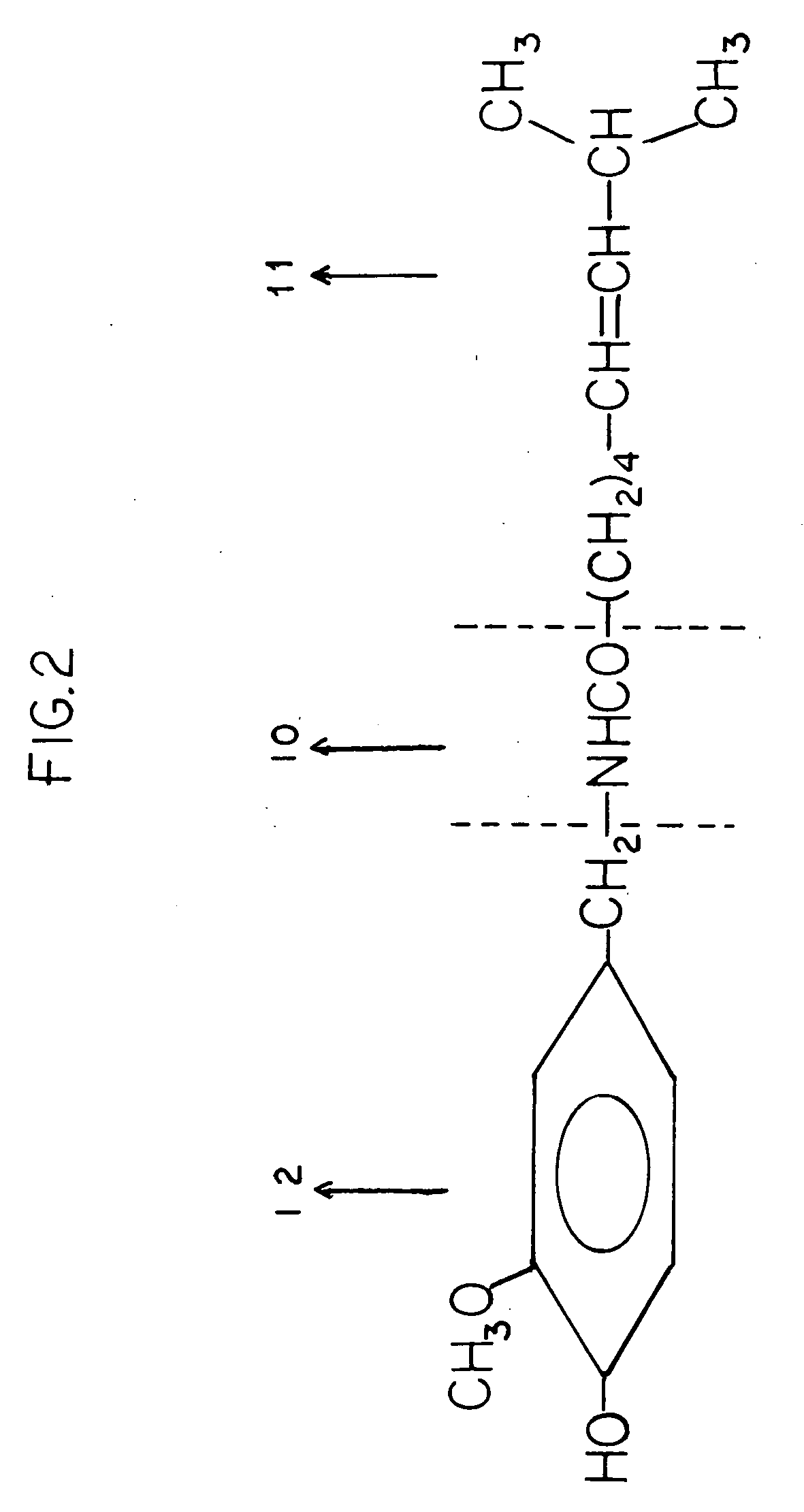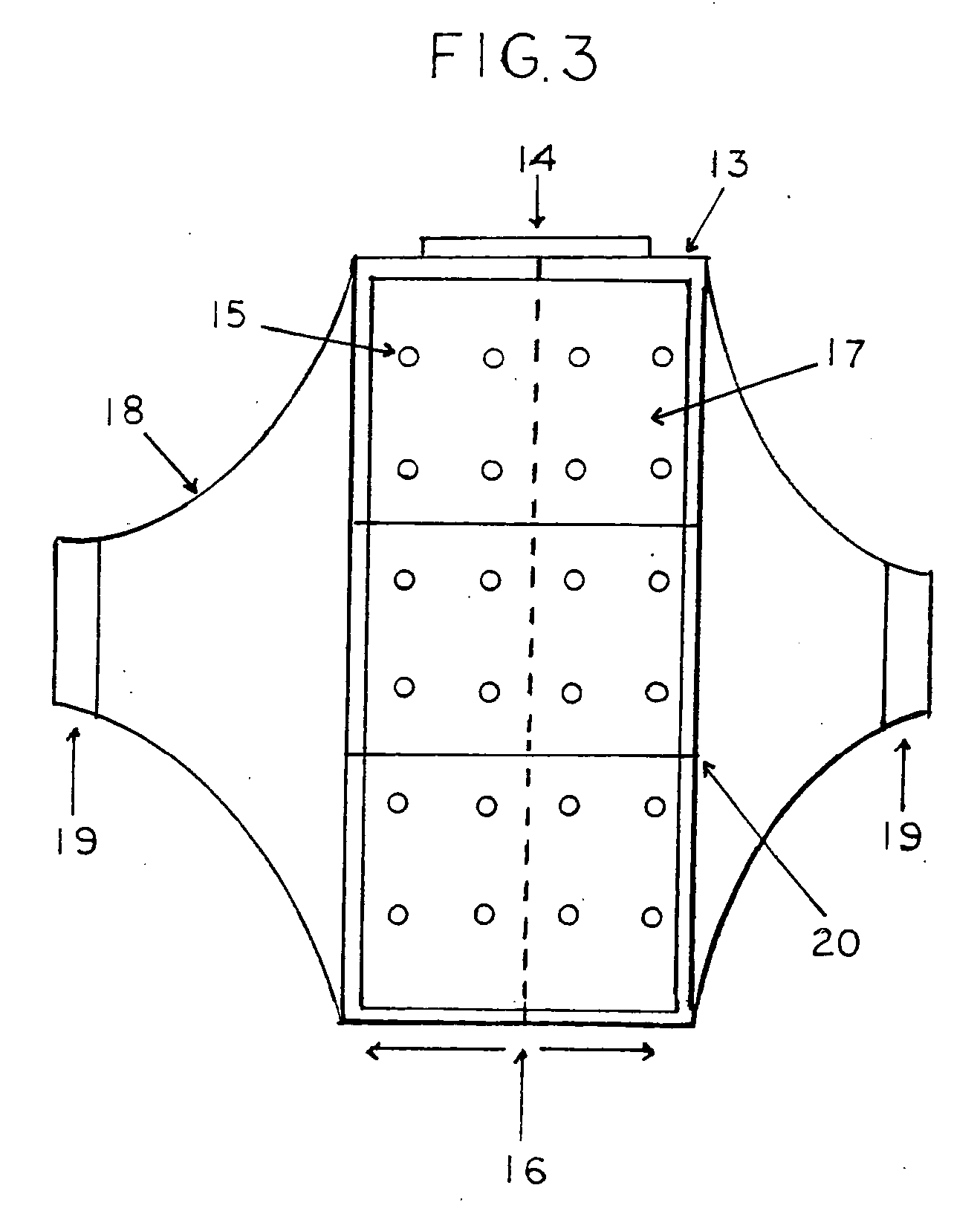Capsicum shark repellent
a technology of capsicum and shark, applied in the field of chemical deterrents, can solve the problems of temporary blindness, phenacyl bromide serious irritation of eyes, and impaired vision
- Summary
- Abstract
- Description
- Claims
- Application Information
AI Technical Summary
Benefits of technology
Problems solved by technology
Method used
Image
Examples
embodiment
Number One
[0080] Capsaicinoids contained in OC are not very soluble in water, but they are very soluble in alcohol, grease and oil. They show an amphiphilic characteristic instead of an absolute hydrophobic property. Existence of the phenol group (12) in the molecular structure makes it sparingly soluble in cold water. On the other hand, existence of the alkyl chain (11) makes it very soluble in fat, greases and oils making it able to react with lipid membranes of fishes. OC is manufactured by two different ways according to the used type of solvent. To produce a fat-soluble oleoresin, dichloroethane, hexane or benzene, are used. To produce a water-soluble oleoresin, acetone or ethanol is the usual solvent.
Power of Dilution
[0081] The pungency of capsaicinoids is quantified in terms of su. This value is the dilution at which, pungency can just be detected by a trained taster. Pure capsaicin is assigned a su value of 16×106 ml / g, implying that it can be barely detected ...
embodiment number two
[0095] This embodiment is developed considering acute senses and reflexes of sharks, which it makes to them to retreat instantly to chemicals. An effective chemical repellent is able to stop a shark's bite, a fraction of second at a really short distance measured in centimeters, if a fish, prey or object hold such chemical repellent. In some way, it has been demonstrated by clark (1974), p. 718, with the toxic peptide secreted from pardachirus marmoratus and the read sea's sharproof fish.
Stability
[0096] Capsaicin is a stable alkaloid, seemingly unaffected by cold or heat, which it retains its original potency despite time, cooking, or freezing (Dewitt, 1999, p. 56). Capsaicin is very stable toward alkalis (Nelson, 1920, p. 597). Its pungency is not destroyed by heating with 2% NaOh (Monsereenusorn, 1982, p. 321). On the other hand, OC is a sterile product that can remain stable for up to 2 or 3 years under storage conditions. Characteristic of stability makes oc, suitable for coa...
embodiment number three
[0160] A natural use of OC for repelling terrestrial animals has been done under a spray form. This way to deliver a rapid squirt or atomized blast of oc for repelling dangerous aquatic animals as sharks is proposed in this embodiment. This device must comprise 1. A pressurized can with OC at a high concentration ranging it between 3% and 30% capsaicin concentration and pungency rating between 500,000 and 4,500,000 su. 2. A solvent for diluting oc. 3. A carrier such as co2 for pressuring the can. 4. A 2 m minimum squirt distance underwater. 5. A minimum required pressure for providing 10 blasts produced by a lateral trigger, and 6. A leash holding the can close to the scuba diver. Such a device is suitable for self-defense, as a shield for repelling sharks by leaving a cloud of oc, between a scuba diver and a shark or for spraying directly to avoid a shark's attack underwater.
[0161] A preparation of a solution with 12% capsaicin concentration for this embodiment may be defined as i...
PUM
 Login to View More
Login to View More Abstract
Description
Claims
Application Information
 Login to View More
Login to View More - R&D
- Intellectual Property
- Life Sciences
- Materials
- Tech Scout
- Unparalleled Data Quality
- Higher Quality Content
- 60% Fewer Hallucinations
Browse by: Latest US Patents, China's latest patents, Technical Efficacy Thesaurus, Application Domain, Technology Topic, Popular Technical Reports.
© 2025 PatSnap. All rights reserved.Legal|Privacy policy|Modern Slavery Act Transparency Statement|Sitemap|About US| Contact US: help@patsnap.com



